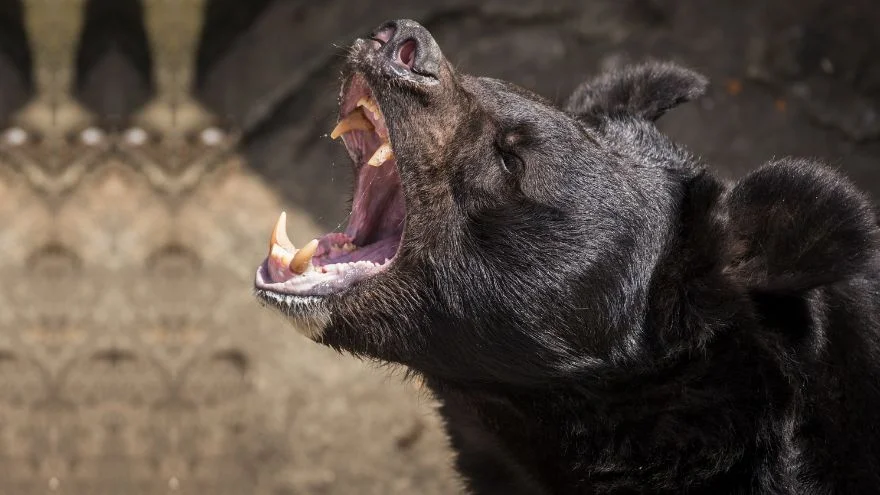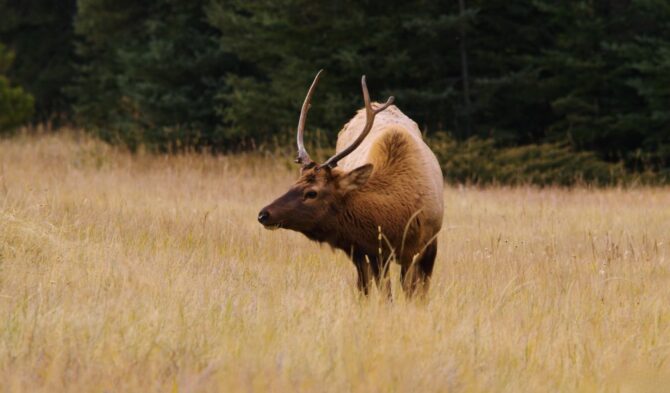Michigan’s unique geography and vast freshwater coastline make it a popular destination for outdoor enthusiasts.
With such a vast expanse of water and land, Michigan is home to a diverse array of animals, some of which are potentially deadly to humans.
Some of the most dangerous animals in Michigan range from venomous spiders, snakes, and ticks to disease-carrying mosquitoes, among several others.
Even more alarming, individuals with allergies to these animals’ bites could be at an increased risk of harm.
In this article, we’ve compiled a list of the top 10 most dangerous creatures in Michigan and provided essential wildlife safety tips to help you prepare for your adventure.
The Most Dangerous Animals in Michigan
1. Brown Recluse Spider

- Scientific Name: Loxosceles reclusa
- Habitat: Woodpiles, sheds, garages
- Threats: Venomous spider, painful bites
First on our list (apologies to all arachnophobes out there) is the brown recluse spider.
A popular but highly dangerous arachnid, the brown recluse is widely distributed in North America. It also lives close to humans, which is risky given its venomous nature.
The brown recluse’s bite is enough to keep you in the hospital and has undesirable effects like fever, convulsions, itching, muscle pain, and nausea.
Death is usually rare but can occur if the victim doesn’t get treated long enough.
The good news is that the brown recluse prefers avoiding humans unless it feels threatened. Do not touch any spider you see in Michigan, and check where you stay to be sure it is spider free.
2. Northern Black Widow Spider
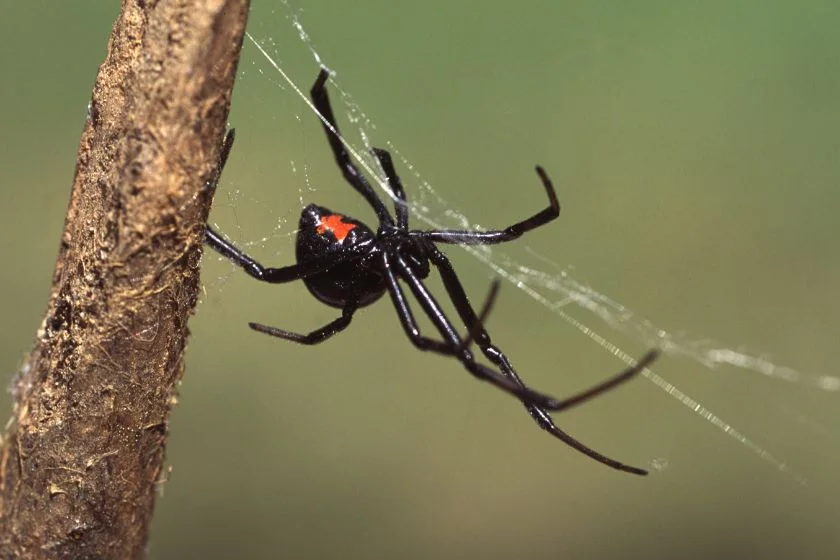
- Scientific Name: Lactrodectus variolus
- Habitat: Crevices, woodpiles
- Threats: Threatening venomous spider in northern US
There are over 30 black widow species existing in the Latrodectus genus, and they are spread worldwide.
The Northern black widow is one of the species that live in North America, and it is classified alongside the brown recluse as a spider whose venom has a strong effect.
In Michigan, you can find it more in the lower peninsula.
The black widow’s effect ranges based on the person involved. While some might experience mild irritations, others would have to be hospitalized.
Some of its effects are burning, swelling, paralysis of the diaphragm, and muscle pain.
3. Black-legged Ticks

- Scientific Name: Ixodes scapularis
- Habitat: Wooded and forested areas
- Threats: Threatening Lyme disease vectors
The black-legged tick is also known as the deer tick, and at first glance, it doesn’t look very dangerous.
What possible harm can this tiny arachnid do? Turns out, it can do a lot, and its small size is a formidable tool.
Ticks feed on blood, and you may not notice when they attach themselves to you and turns you into their host.
The black-legged tick is the size of a sesame seed. How would you notice it?
The problem with the tick is not just that it sucks blood, but it also transmits diseases to its host. Anaplasmosis, babesiosis, and Lyme disease are some examples.
The well-known disease is Lyme disease because it can damage the joints and central nervous system if left untreated.
4. Common House Mosquitoes

- Scientific Name: Culex pipiens
- Habitat: Wet, humid areas
- Threats: Can transmit diseases like Zika, malaria, and West Nile virus
The common house mosquito is under the genus Culex, which regroups certain mosquito species. It is also called the northern house mosquito.
Like ticks, mosquitoes seem more of a nuisance than a danger, but while it doesn’t look dangerous, the common house mosquito has its risks.
Culex mosquitoes in general are responsible for spreading diseases like the West Nile virus, avian malaria, Saint Louis encephalitis, Eastern Equine Encephalitis (EEE), and filarial worms.
These illnesses and other mosquito-related diseases are rampant worldwide, as this study showed.
5. Paper Wasp

- Scientific Name: Polistes gallicus
- Habitat: Shrubs, tree branches, porch
- Threats: Aggressive and territorial, can sting repeatedly, potentially dangerous to those with allergies
The paper wasp is a term that refers to a particular group of wasp species, but for our list, we focused on one paper wasp species that goes by the scientific name pollistes gallicus.
Wasps are often associated with bees, and they will attack if they feel threatened.
What would make wasps feel threatened? Trying to destroy their nests is one, or getting too close to it. Their bites are painful and can cause swelling.
If a person is allergic to the bite, it makes the situation even worse. Avoid wasps at all costs if you get to Michigan.
6. Black Bears

- Scientific Name: Ursus americanus
- Habitat: Forests, mountains
- Threats: Strong, unpredictable, can attack when threatened
The black bear is more specifically termed the American black bear, and it is small compared to other bears like the grizzly.
However, the size doesn’t make it any less dangerous. While it tends to be docile and even shy away from humans, it will attack if it feels threatened.
The problem is that it may feel threatened even if you had no intentions of threatening it.
Even being too close can cause it to react. If you do find yourself facing a bear, remain calm and talk slowly while backing away.
7. Gray Wolves

- Scientific Name: Canis lupus
- Habitat: Forests, wetlands, grasslands
- Threats: Top predators, can attack humans when habituated
The gray wolf is the largest member of the Canidae family and has a lot of subspecies.
There have even been debates as to whether the domestic dog is a subspecies of the wolf as well, an assertion many experts now agree with.
Movies have done a good job of portraying the gray wolf as dangerous, so anyone knows meeting a pack of wolves out at night is not good news. It gets worse if you run.
Wolves tend to be shy of humans, but when you run, it triggers the hunting instinct of these wild dogs. The best thing to do would be to back away slowly.
8. Eastern Massasauga Rattlesnakes
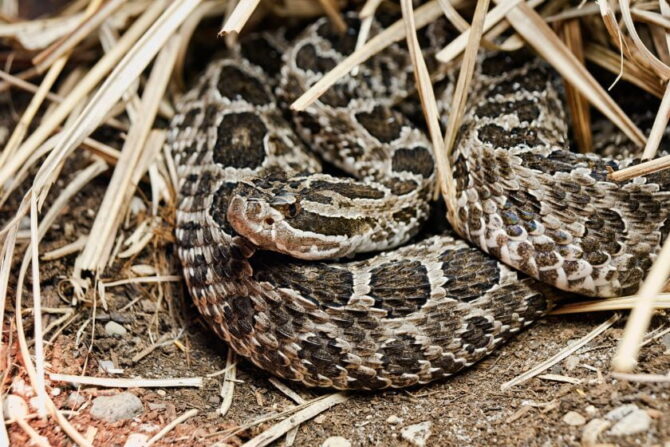
- Scientific Name: Sistrutus catenatus
- Habitat: Wetlands
- Threats: Venomous, bites can be fatal
The massasauga is a rattlesnake species that would also be called a pit viper, and that’s enough proof to show that it is venomous.
Just like all vipers, the massasauga’s venom can be deadly. It is the only venomous snake in Michigan.
The massasauga is a rare sight in Michigan due to its declining population in that area, but you might still stumble upon one.
As a general rule, wear strong boots when exploring a habitat where any snake can be, and do not touch any snake, even if it isn’t venomous.
9. Murder Hornets
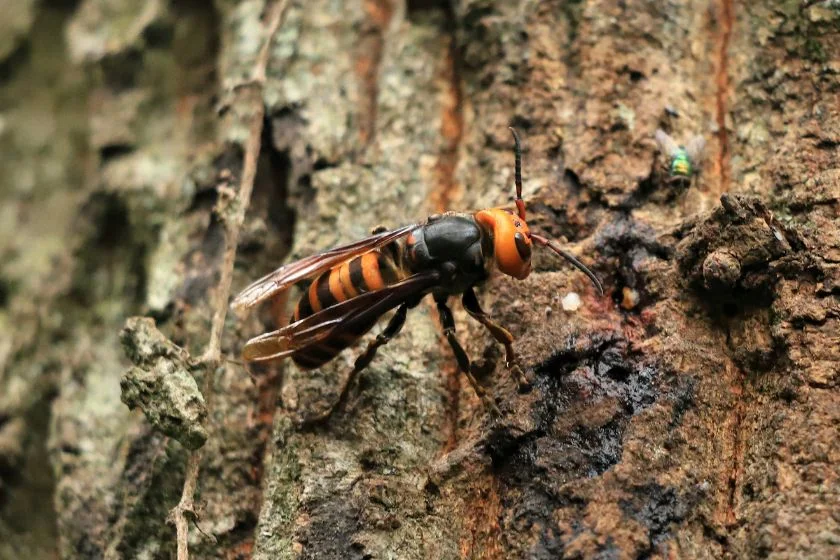
- Scientific Name: Vespa mandarinia
- Habitat: Forest
- Threats: Large, aggressive, painful sting
The official name of the murder hornet is the Asian giant hornet, but the mainstream media dubbed it the “murder hornet” for good reasons.
The arrival of the murder hornet to the United States spelled danger for honeybees as the hornets murdered bees in numbers—hence the name.
Murder hornets generally don’t attack humans, but like wasps, they will do so if provoked, and their sting can be fatal.
Murder hornets have been held responsible for the death of up to 40 people in its hometown Japan.
Those that survived its venom describe its sensation as being “stabbed by a red-hot needle.”
10. Fowler’s Toad

- Scientific Name: Anaxyrus fowleri
- Habitat: Open woodlands, sand prairies, meadows
- Threats: Secretes poisonous parotoid glands
The Fowler’s toad may not be as toxic as every other animal we’ve mentioned so far, but it is risky as well.
It secretes a poisonous substance from warts on its back as a defense mechanism against predators. Many big mammals find it distasteful, and it can kill small mammals.
You won’t eat a live toad (at least we hope so!), but stepping on it or touching it can get you affected.
The secreted substance has a strong effect on humans, ranging from skin damage to blurred vision.
Michigan Wildlife Safety Tips
No one would like their trip cut short because they got bit by a spider or a snake.
Michigan is teeming with these animals, but the good news is you can still have a fun time visiting one of America’s lovely states!
We’ve put together these few tips to help you stay safe. Here they are:
- Use insect repellent of a maximum of 30% DEET on your skin and one with permethrin on your clothes. This will protect you from mosquitoes and the dreaded tick.
- Be well-covered up. Wear long pants, long sleeves, and even a hat. Light-colored clothes are better than dark ones.
- Don’t touch any animal you see or get too close to them. You’d be putting yourself at risk.
- If you notice any rash, visit the nearest hospital.
Related Questions
Are there poisonous snakes in Michigan?
There are a couple of snake species in Michigan, but there’s only one poisonous snake. The Massasauga rattlesnake is the only poisonous snake in Michigan.
What is the most dangerous animal in Michigan?
Many animals in Michigan are dangerous, so it is hard to pick out which would rank as the most dangerous. Top contenders are the black recluse spider, the Massasauga rattlesnake, and the murder hornet.
Are there dangerous animals in Lake Michigan?
Though it isn’t likely, there may be some dangerous animals in Lake Michigan. Some reports claimed that bull sharks lived in Lake Michigan, but it is unconfirmed.
Conclusion
There are many creatures that make the list of the most dangerous animals in Michigan that you should not be anywhere close to, from venomous spiders to “docile-but-angry” bears.
Part of planning a trip involves safety, regardless of where you’re going.
Thus, as you research the crime rate and the weather, also note the Michigan wildlife and how to comport around them. This would help you have a stress-free trip.
